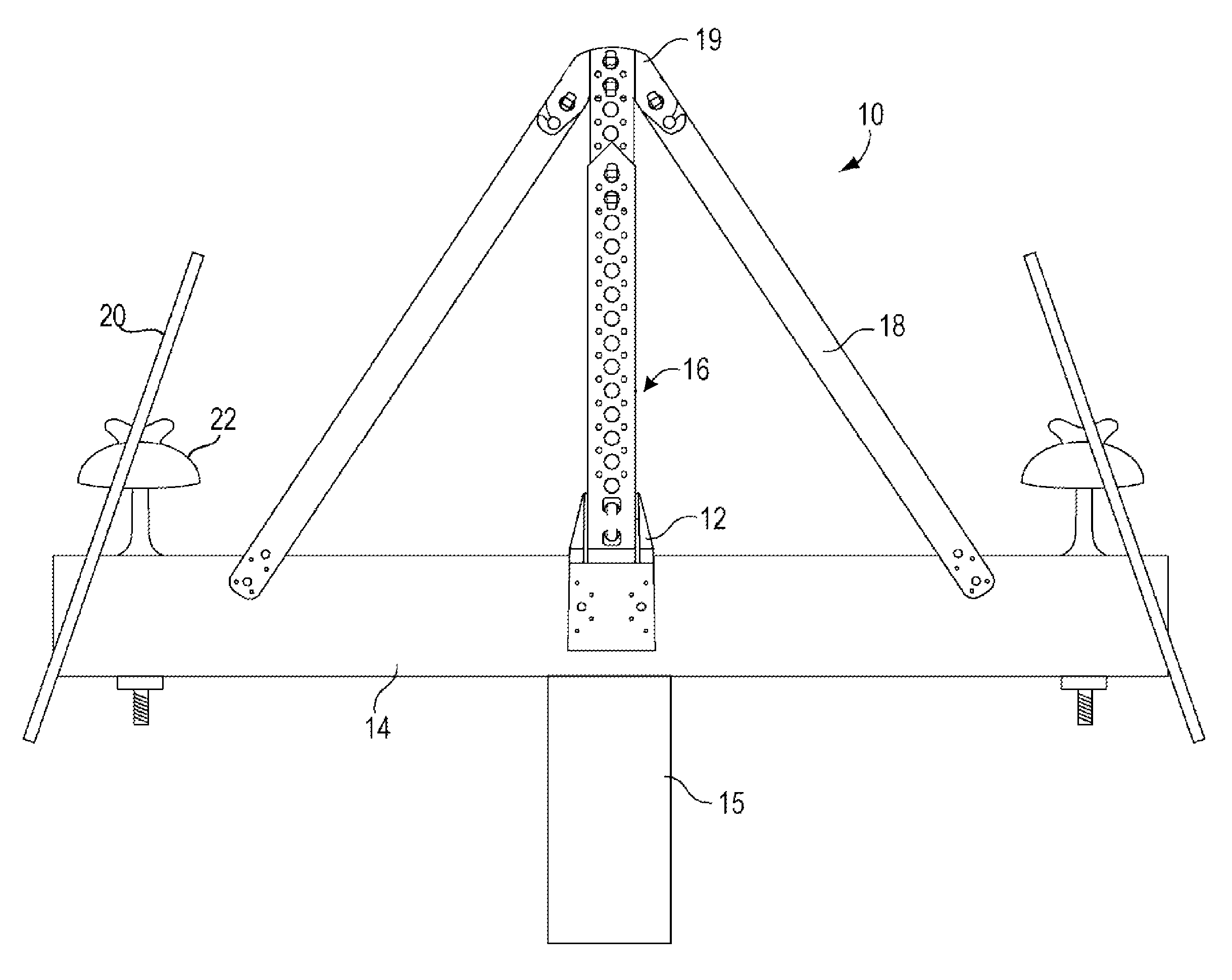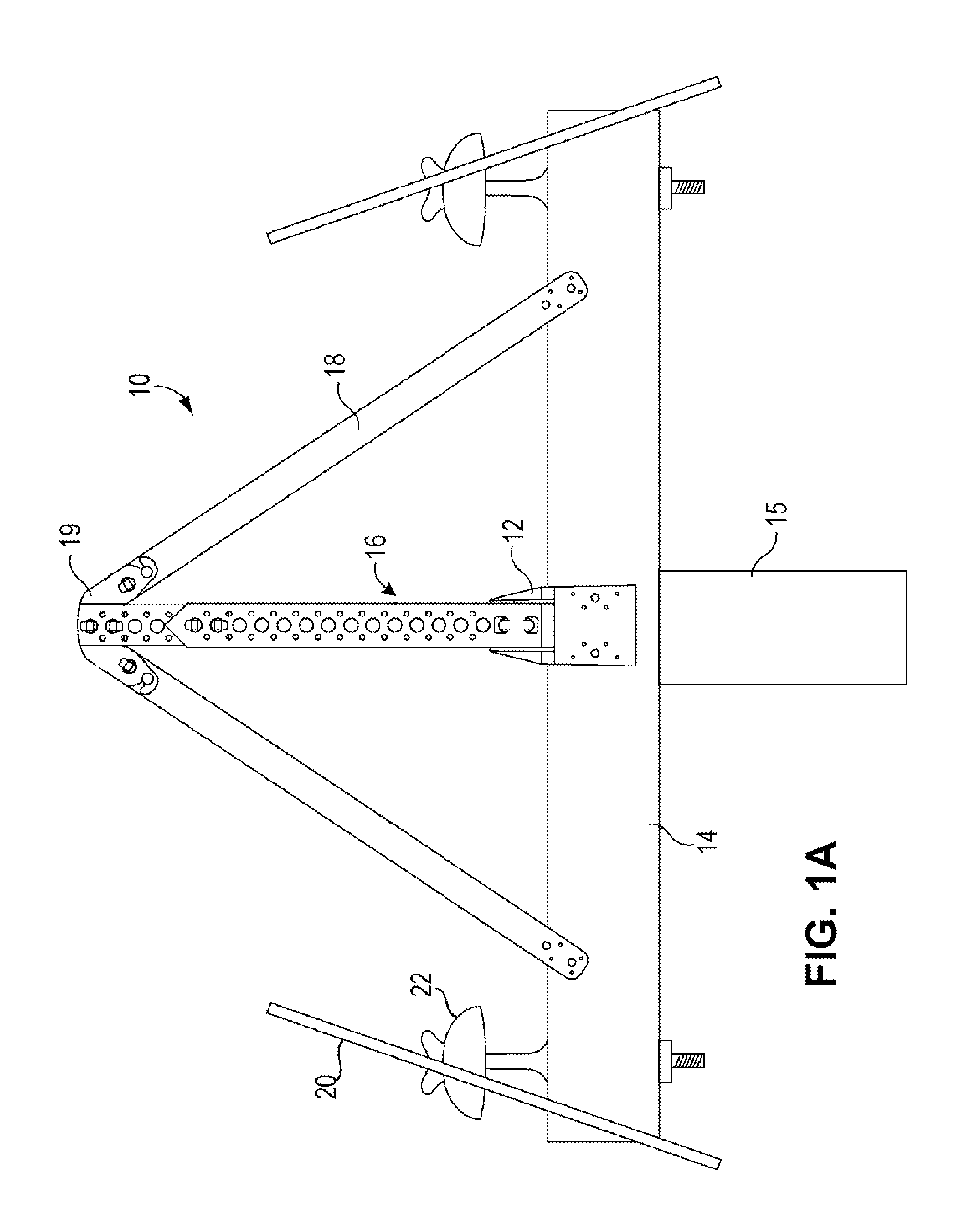Wildlife deterrent for high voltage supporting members
a technology of supporting members and deterrents, which is applied in the direction of machine supports, movable shelf cabinets, and dismountable cabinets, etc., can solve the problems of sudden or permanent outage, animal death, and disruption of power supply to customers
- Summary
- Abstract
- Description
- Claims
- Application Information
AI Technical Summary
Benefits of technology
Problems solved by technology
Method used
Image
Examples
Embodiment Construction
[0050]FIG. 1A illustrates an embodiment of the wildlife deterrent 10 in accordance with one embodiment of the invention. A bracket 12 for the deterrent 10 is nailed or lagged (using a lag screw) to a wooden supporting member 14 of a utility support structure 15. An adjustable-length center support 16 is connected to the bracket 12 by hand-releasable clips (seen in greater detail in FIG. 3). Two arms 18 are connected near the top of the center support 16, via a connector piece 19, by hand-releasable clips (seen in greater detail in FIGS. 6-8). The middle portion of the connector piece 19 is obscured by the top of the center support 16. The entire deterrent10 may be molded plastic, such as one-eighth inch thick PVC or polyethylene. The plastic is of a type that has well-defined dielectric characteristics and long life outdoors.
[0051]The center support 16 has an adjustable length to allow the deterrent 10 to be adapted to different separations between conductors 20. Each conductor 20 i...
PUM
 Login to View More
Login to View More Abstract
Description
Claims
Application Information
 Login to View More
Login to View More - R&D
- Intellectual Property
- Life Sciences
- Materials
- Tech Scout
- Unparalleled Data Quality
- Higher Quality Content
- 60% Fewer Hallucinations
Browse by: Latest US Patents, China's latest patents, Technical Efficacy Thesaurus, Application Domain, Technology Topic, Popular Technical Reports.
© 2025 PatSnap. All rights reserved.Legal|Privacy policy|Modern Slavery Act Transparency Statement|Sitemap|About US| Contact US: help@patsnap.com



